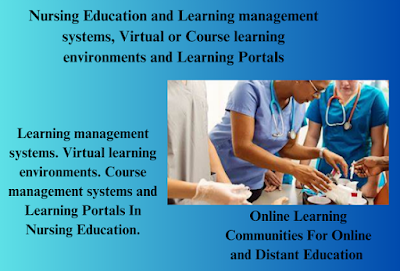The Learning management systems Virtual or Course learning environments and Learning Portals In Nursing Education. The landscape of nursing education is evolving rapidly with the integration of online learning technologies.
The Learning management systems Virtual or Course learning environments and Learning Portals In Nursing Education
To stay ahead, it’s crucial to understand the different tools available, such as Learning Management Systems (LMSs), Virtual Learning Environments (VLEs), and Learning Portals, and their impact on educational outcomes. Learning management systems (LMS), virtual learning environments (VLEs), and learning portals are essential in nursing education and provide platforms for online learning, course management, and access to resources. These systems facilitate the delivery of teaching materials, track learning progress, and improve communication and interaction between students and faculty.
Understanding Key Educational Technologies
Learning Management Systems (LMSs), such as Blackboard, Brightspace, Canvas, and Moodle, create a centralized environment where learners and educators interact. These systems are designed to manage course content, facilitate communication, and track progress. However, despite their extensive features, many users find that they only use basic functionalities, often due to limited digital literacy or complex interfaces (Dahlstrom, Brooks, & Bichsel, 2014).
Virtual Learning Environments (VLEs) are platforms built by LMSs to offer a more immersive online experience. VLEs provide interactive and collaborative spaces that can include shared workspaces, mobile access, and support services like academic advising and mentoring (Straumsheim, 2014). Yet, many VLEs are outdated, averaging around eight years old, leading to a growing demand for more adaptive, user-friendly, and mobile-integrated solutions (Dahlstrom et al., 2014).
Course Management Systems (CMSs) and Learning Portals often overlap with LMSs but may focus more specifically on course delivery and access to learning materials. They offer essential features like quizzes, assignments, and grades, but the integration of advanced tools such as instant messaging, video conferencing, and multimedia access remains limited.
The Rise of Online Learning Communities
Online learning communities have become integral in both traditional and distance education. These communities leverage various online tools to enhance learning experiences. Learning modules, for instance, are self-contained units that offer flexible, on-demand learning opportunities. These modules often include clear learning outcomes, interactive activities, and evaluation components, making them suitable for both independent learning and integration into broader curricula.
Blended Learning, a combination of online and face-to-face interactions, optimizes educational outcomes by blending the convenience of online resources with the effectiveness of in-person engagement. This hybrid approach allows students to engage with content online and then apply their knowledge in classroom settings, or vice versa (Bonk & Graham, 2005).
Enhancing Engagement and Collaboration
The effectiveness of online learning environments hinges on their ability to foster engagement and collaboration. Modern LMSs and VLEs must offer more than just basic functions. Users increasingly demand features like real-time communication, interactive multimedia, and streamlined assignment management. The Next Generation of Digital Learning Environments Initiative, backed by the Bill and Melinda Gates Foundation, aims to address these needs by exploring new technologies and methodologies to replace outdated systems (Straumsheim, 2014).
The Future of Nursing Education Online
In nursing education, online platforms support a wide range of activities, from delivering individual courses to facilitating comprehensive degree programs. They also play a crucial role in clinical settings, offering orientation, continuing education, and career development opportunities for nurses. Online learning modules and reusable learning objects (RLOs) are particularly useful for providing updates and foundational knowledge.
Blended and fully online courses are becoming more prevalent. These courses may include asynchronous elements, such as discussion forums and recorded lectures, or synchronous components like live video sessions. The goal is to leverage online tools to complement traditional teaching methods, enhance learning experiences, and provide timely feedback.
Conclusion
As nursing education continues to embrace online learning, understanding and utilizing advanced LMSs, VLEs, and related technologies will be essential. By focusing on user-friendly, adaptable platforms and integrating innovative teaching practices, educators can enhance student engagement, improve learning outcomes, and better prepare future healthcare professionals for the challenges ahead. Stay tuned as we delve deeper into strategies for optimizing online learning environments in our upcoming discussions.
Read More:
https://nurseseducator.com/didactic-and-dialectic-teaching-rationale-for-team-based-learning/
https://nurseseducator.com/high-fidelity-simulation-use-in-nursing-education/
First NCLEX Exam Center In Pakistan From Lahore (Mall of Lahore) to the Global Nursing
Categories of Journals: W, X, Y and Z Category Journal In Nursing Education
AI in Healthcare Content Creation: A Double-Edged Sword and Scary
Social Links:
https://www.facebook.com/nurseseducator/
https://www.instagram.com/nurseseducator/
https://www.pinterest.com/NursesEducator/
https://www.linkedin.com/in/nurseseducator/
https://www.researchgate.net/profile/Afza-Lal-Din
https://scholar.google.com/citations?hl=en&user=F0XY9vQAAAAJ
